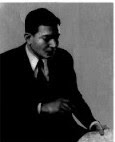Patna man who introduced shampoo to UK
 A two-hour drive from London towards the picturesque hilly north east took me to the beach-fringed city of Brighton & Hove. Aside from a quaint weekend, I was here to re-discover the fascinating legacy of an Indian, unknown to most in his home country, and nearly forgotten in his adopted nation as well.
A two-hour drive from London towards the picturesque hilly north east took me to the beach-fringed city of Brighton & Hove. Aside from a quaint weekend, I was here to re-discover the fascinating legacy of an Indian, unknown to most in his home country, and nearly forgotten in his adopted nation as well.Born in Patna, Sake Dean Mahomed represents a quirky, historic accident in Asian immigrant history — this man is said to have introduced the shampoo to England, a product most believe came to us from the West.
 Mahomed's passion for enterprise made him open Mahomed’s Baths in 1821, which featured the first 'shampooing vapour masseur bath' in England. In other words, the seeds of the ayurvedic spa industry were sown not in Kerela but in Brighton. Located just off the sea on its pristine beach, the bath house became a regular jaunt for England's glitterati then.
Mahomed's passion for enterprise made him open Mahomed’s Baths in 1821, which featured the first 'shampooing vapour masseur bath' in England. In other words, the seeds of the ayurvedic spa industry were sown not in Kerela but in Brighton. Located just off the sea on its pristine beach, the bath house became a regular jaunt for England's glitterati then.Word of mouth helped Mahomed’s Baths, and it even caught the attention of George IV who often visited Brighton, to escape London’s hectic energy. Mahomed's peak was when he was appointed the 'shampooing surgeon' to George IV and William IV, a distinction that attracted even more political and diplomatic glamour to this pioneering concept.
Newspapers of the day began reviewing Mahomed’s Baths and the reviews predictably were glowing. Also, the bath held an Orientalist fascination in the popular consciousness of the times because of its therapeutic reputation: Sake Dean Mohamed advertised the bath as a panacea for those suffering from stiff joints and aching bones, something that earned him the moniker of 'Dr Brighton' as a result.
The site where the bath house stood has now given way to the Queen's Hotel, and its receptionist has no idea of who Sake Mahomed Bath is. "We do not keep records for more than five years, but the museum might have some information," he said, making up for lost history with a touristy enthusiasm. The chances of an immigrant success dating back to 150 being preserved at Brighton Museum seemed slim. But the receptionist's touristy energy did turn out to be contagious; after a quick round of fish and chips, I headed straight to the museum.
Mahomed's portrait occupies a prominent space on the ground floor of the Brighton museum. And accompanying his portrait is a silver cup that he received from the Princess Poniatowsky of Poland for the services rendered. Museum records confirm the heyday of this bath house and that its proprietor was a royal insider; Mahomed knew of royal visits to Brighton before anyone else did. To mark royal occasions, the establishment would be illuminated.
 But nothing evidently lasts forever. Mahomed eventually fell on bad times and in 1841, Mahomed’s Baths went to public auction. Mahomed died ten years after this and while he may not exactly be anchored in every citizen's memory cache in Brighton currently, there are random traces of his rapport with the city. Some street plates feature him if you look carefully.
But nothing evidently lasts forever. Mahomed eventually fell on bad times and in 1841, Mahomed’s Baths went to public auction. Mahomed died ten years after this and while he may not exactly be anchored in every citizen's memory cache in Brighton currently, there are random traces of his rapport with the city. Some street plates feature him if you look carefully.For evidence of a less microscopic tribute, you could ever engage the public transport system here. Because bus number 855 carries the name of Sake Dean Mahomed as part of a public campaign to salute Brighton’s eminent citizens.
More about Deen Mahomed
Born in May 1759, Mahomed started out as a camp follower to Godfrey Evan Baker of Bengal Army's 3rd European regiment. In 1782, Baker resigned from the East India Company and Mahomed accompanied him to Cork, Baker's hometown. In 1786, he eloped with Jane Daly, an Anglo-Irish lady. In 1794, he published The Travels of Dean Mahomet, the first book by an Indian to be written and published in English.
In 1810, he opened London's first Indian restaurant called Hindostanee Coffee House. The restaurant though shut shop in 1813 and he moved to Brighton where he established Mahomed’s Baths in 1821.After his death, his family was largely forgotten until his grandson, Frederick Mahomed, made substantial contributions in the field of high blood pressure.
This piece was first published in Mumbai Mirror


Interesting stuff...you seem to have a knack for unearthing such little known facts.
ReplyDeletevery interesting
ReplyDeleteinteresting read Danish.. Hope you doing good.. Keep in touch :-)
ReplyDeletegreat...nice to know the legacy of an Indian...thanks for writing this beautiful piece..
ReplyDeletethere is a page in wiki dedicated to him with even more details
ReplyDeletehttp://en.wikipedia.org/wiki/Sake_Dean_Mahomed
Go ahead and discover more about him.
Coool!!!
ReplyDeleteProud Bihari:)
Thank you for your comments Salman, Hetal and Mr Talukdar.
ReplyDeleteWhat an interesting blog, introduced by a thought-provoking photo. The unusual wall painting of the dwellings is also a strangely modern interpretation. Something like this hieroglyphic view of a park by Swiss painter Paul Klee, http://EN.WahooArt.com/A55A04/w.nsf/OPRA/BRUE-8LT475.
ReplyDeleteThe image can be seen at wahooart.com who can supply you with a canvas print of it.